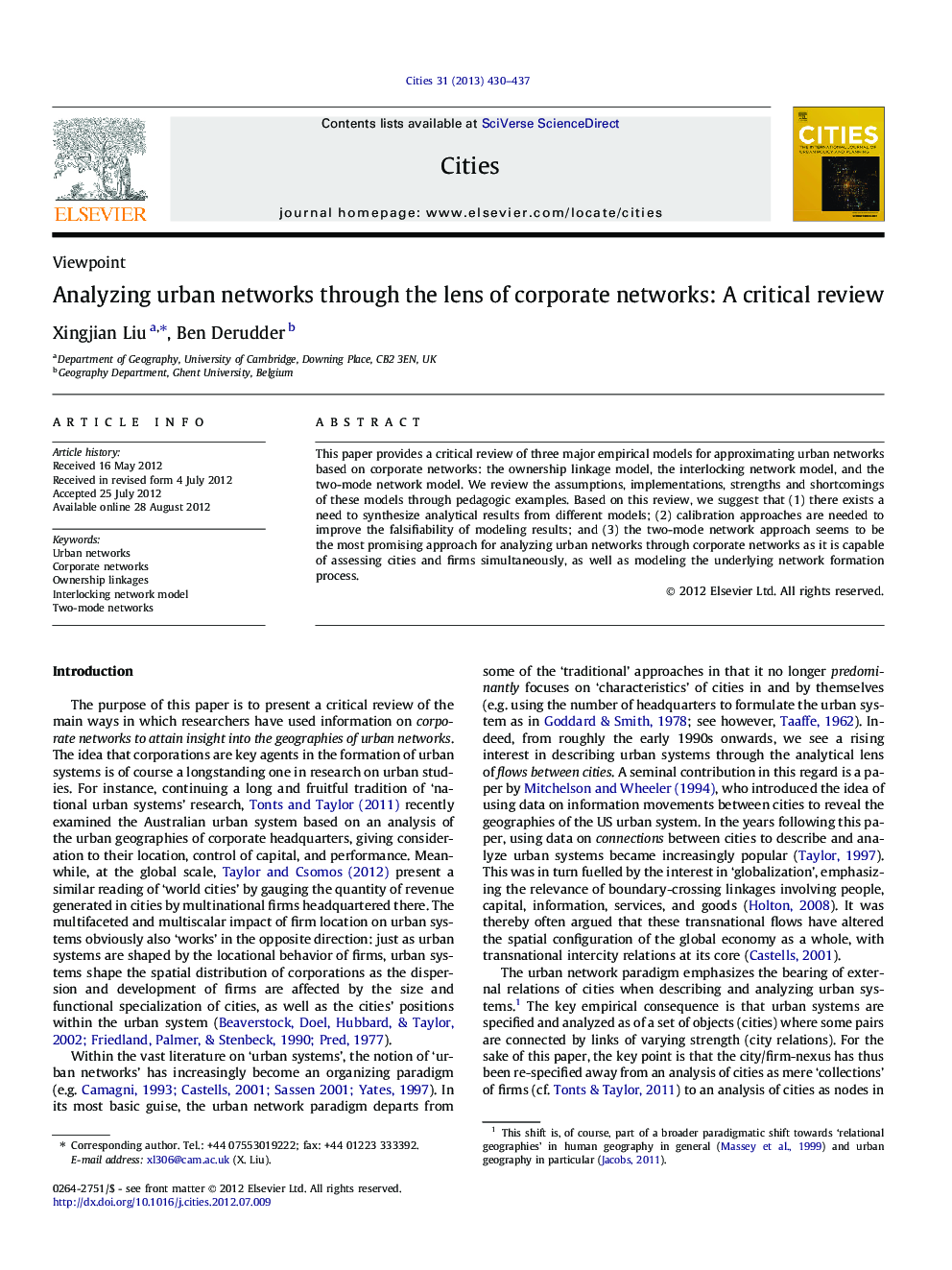| Article ID | Journal | Published Year | Pages | File Type |
|---|---|---|---|---|
| 1008539 | Cities | 2013 | 8 Pages |
This paper provides a critical review of three major empirical models for approximating urban networks based on corporate networks: the ownership linkage model, the interlocking network model, and the two-mode network model. We review the assumptions, implementations, strengths and shortcomings of these models through pedagogic examples. Based on this review, we suggest that (1) there exists a need to synthesize analytical results from different models; (2) calibration approaches are needed to improve the falsifiability of modeling results; and (3) the two-mode network approach seems to be the most promising approach for analyzing urban networks through corporate networks as it is capable of assessing cities and firms simultaneously, as well as modeling the underlying network formation process.
► Provide a critical review of three major empirical models for approximating urban networks based on corporate network. ► Suggest a need to synthesize analytical results from different models. ► Call for calibration approaches to improve the falsifiability of modeling results. ► Recommend the two-mode network approach to be the most promising approach.
